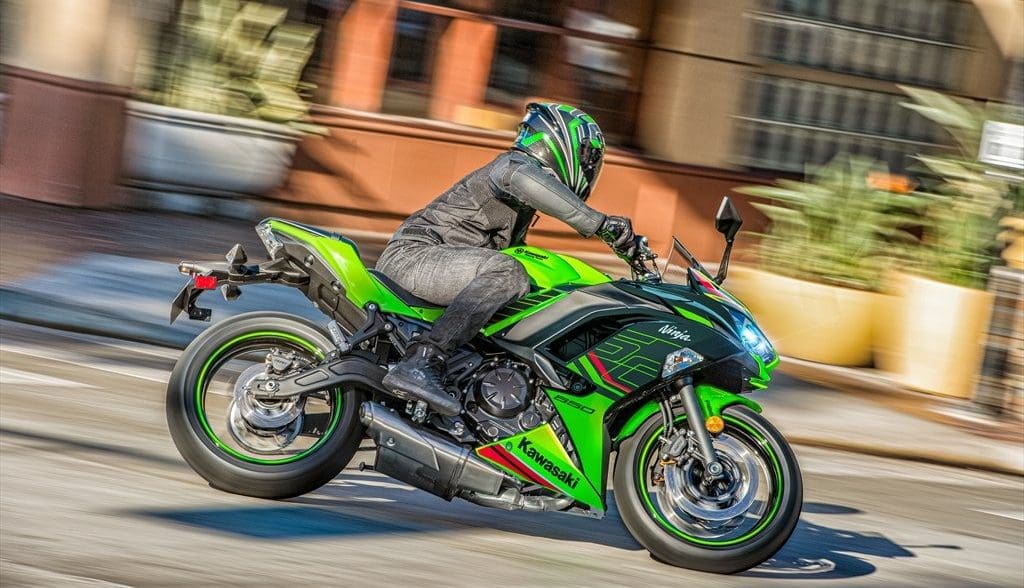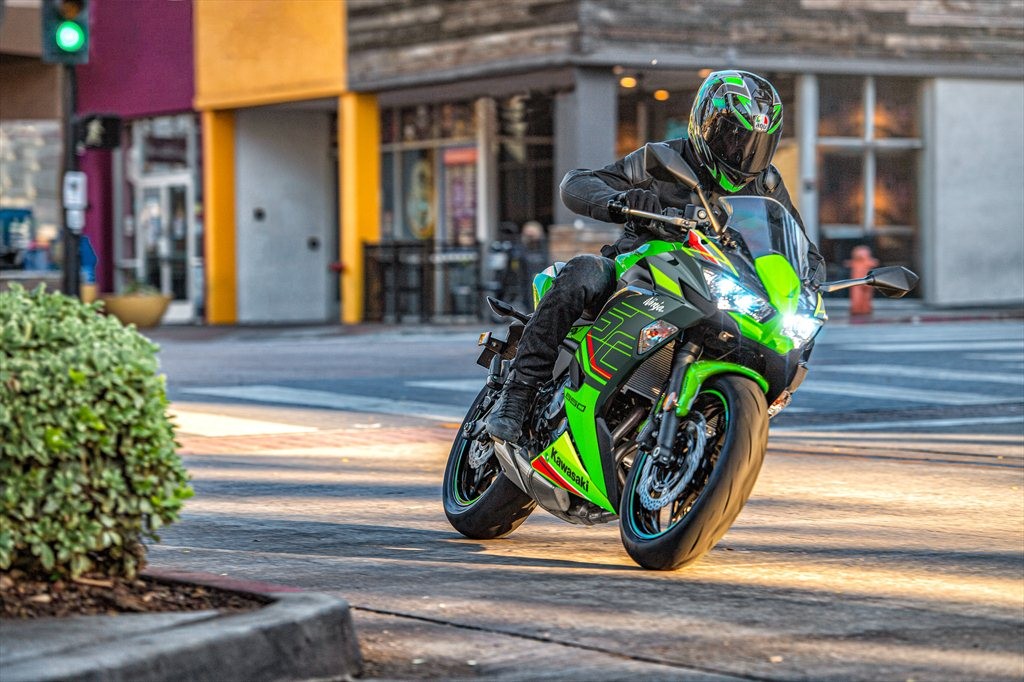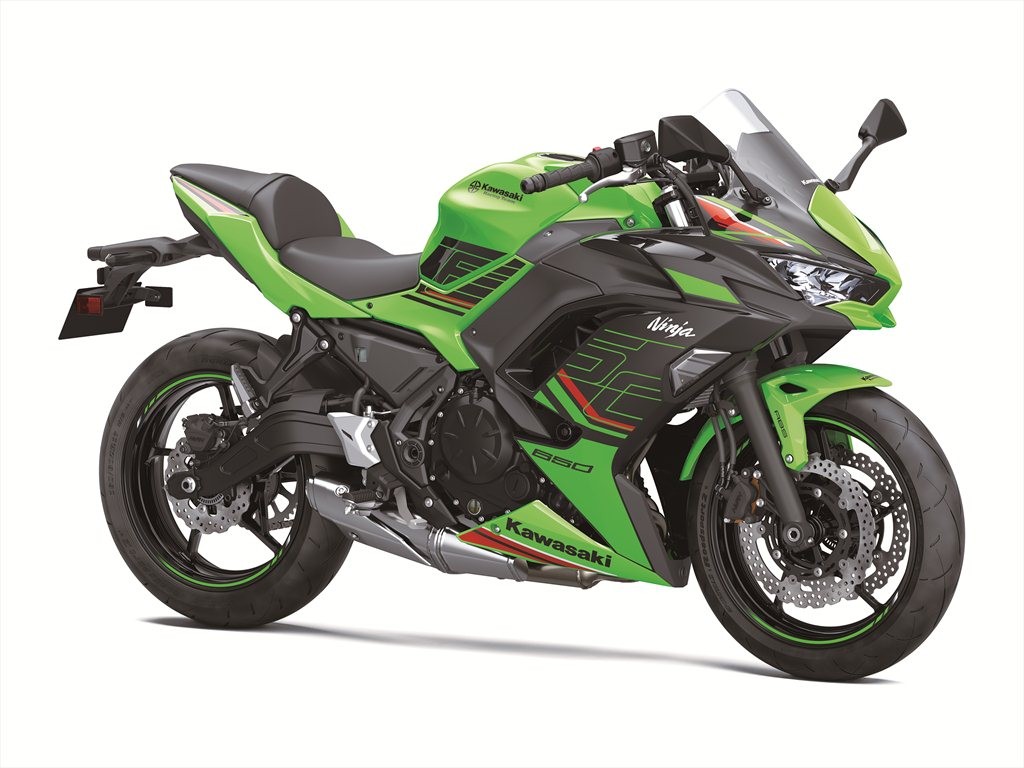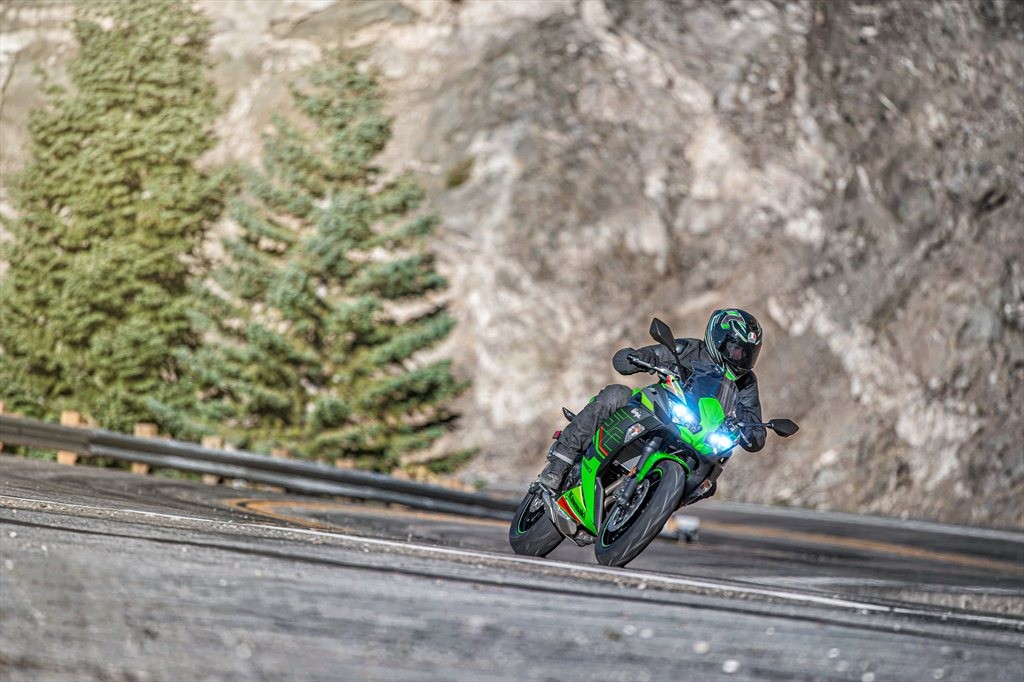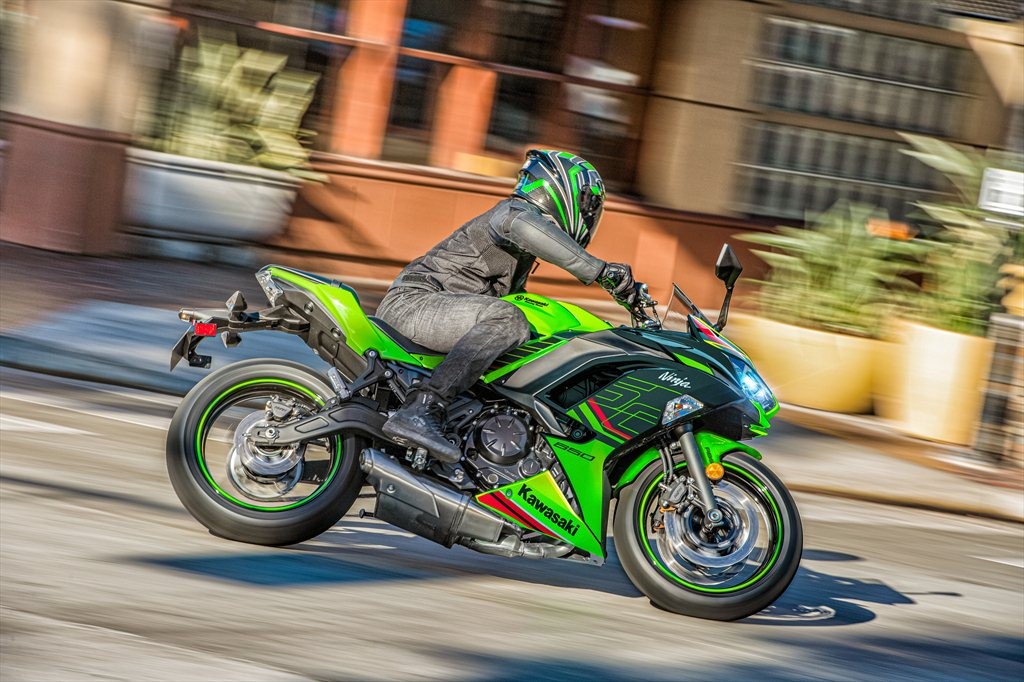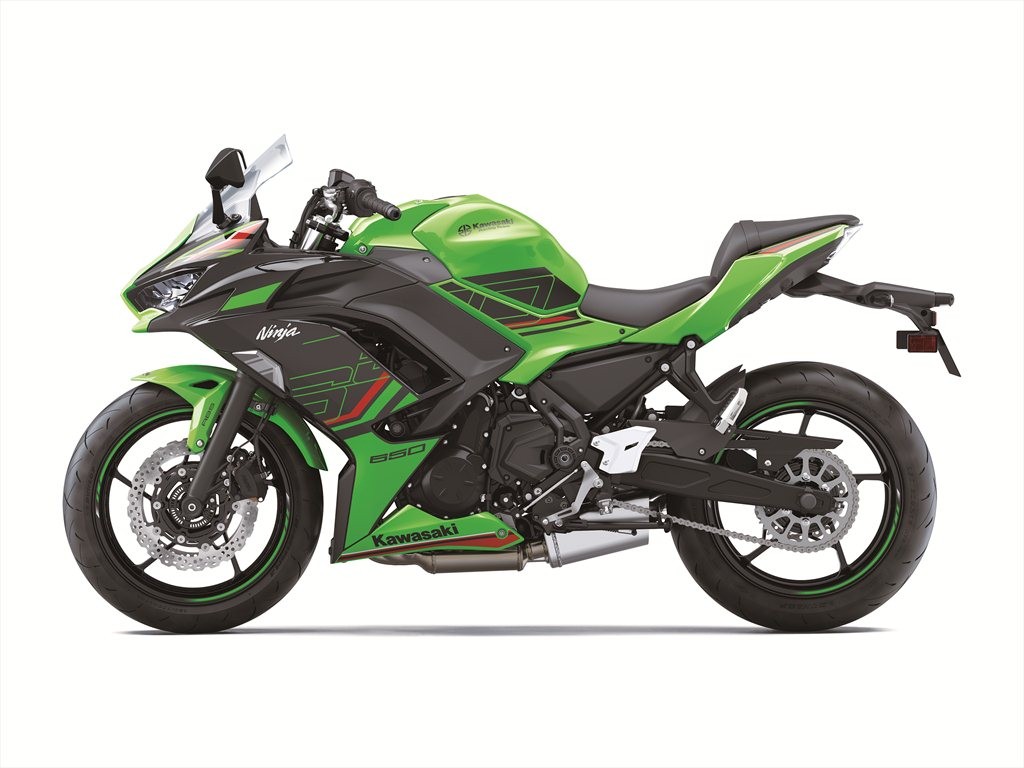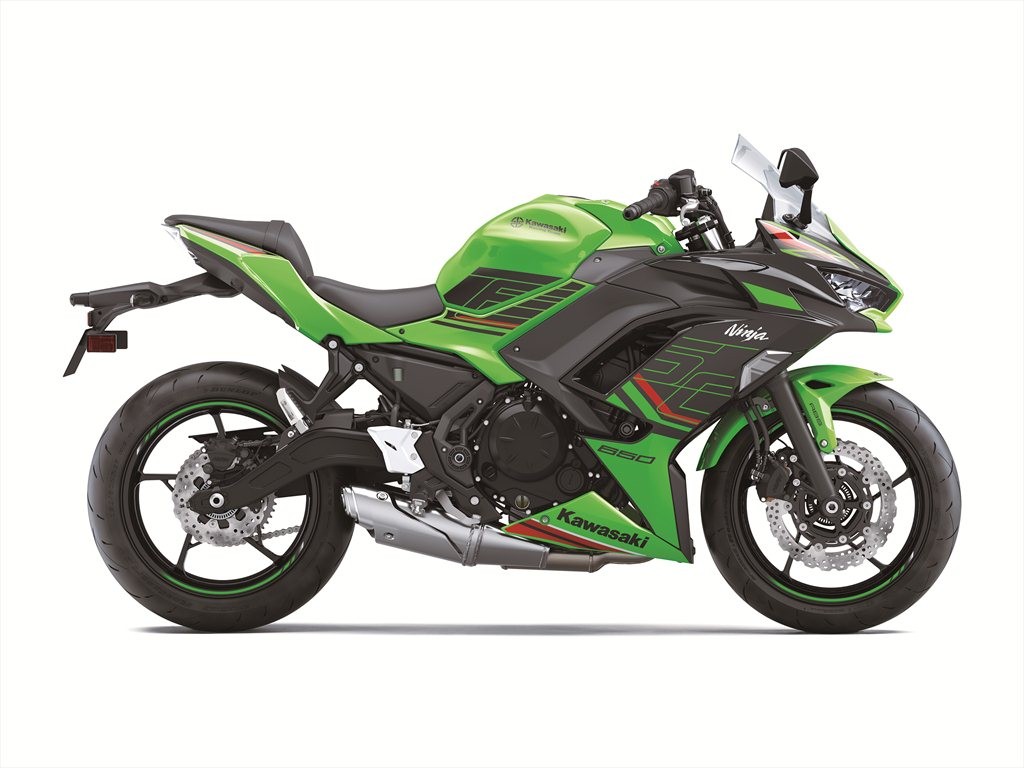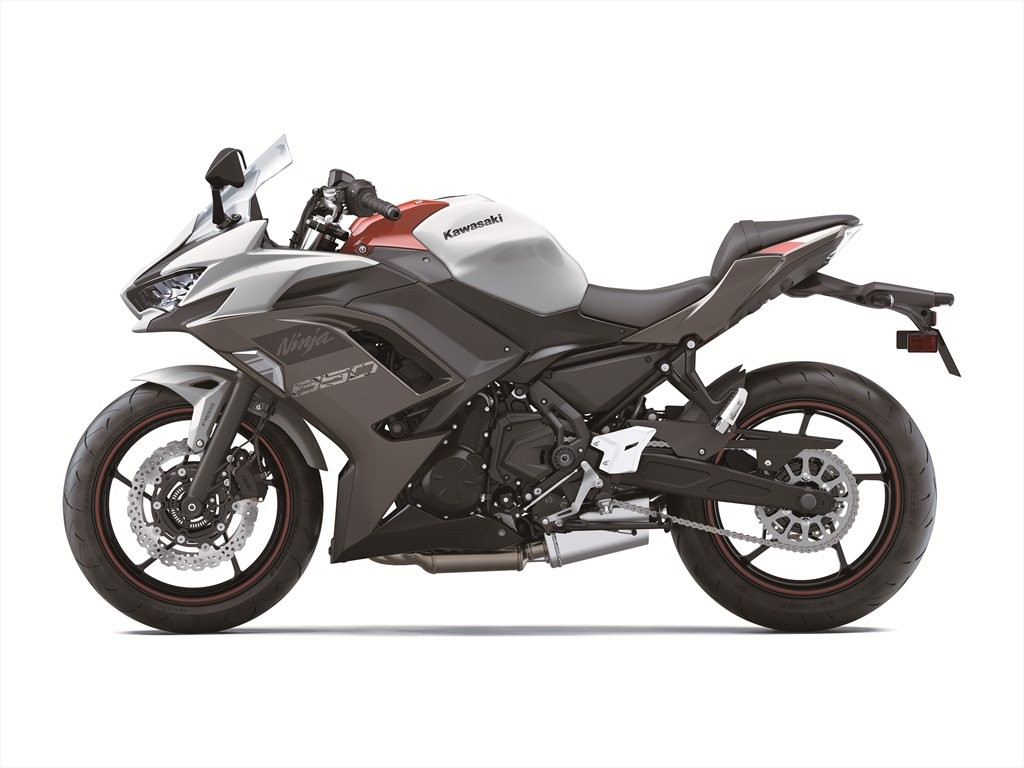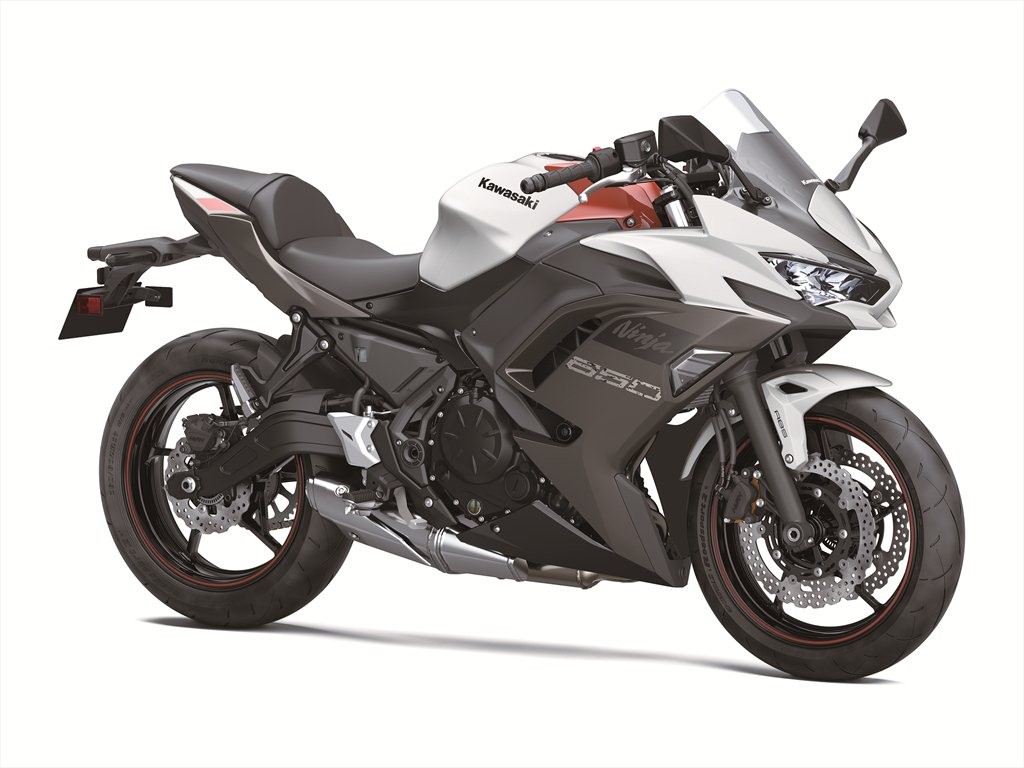The 2023 Kawasaki Ninja 650 Is A Competent Middleweight
Contents
For 2023, Kawasaki‘s Ninja 650 emerges as a contender in the middle weight category. This machine combines a compact 649cc parallel-twin, 68 horsepower engine with a lightweight trellis frame, yielding an exhilarating yet accessible riding experience. With a comfortable, rider-friendly ergonomics, it’s an ideal choice for both daily commuting and spirited weekend jaunts. The 650’s capabilities are highlighted by its sleek styling which mirrors the aggressive character of other bikes in Kawasaki’s Ninja family. Integrated within this aerodynamic design is a modern LED headlight, adding both function and form.
The motorcycle’s instrumentation is equally contemporary, boasting a full-color 4.4 inch TFT display that offers smartphone connectivity via Kawasaki’s RIDEOLOGY THE APP. The Ninja 650’s powertrain is optimized for smooth, linear power delivery, ensuring responsive low- to mid-range torque. The Assist and Slipper Clutch facilitates seamless shifts, while the Dunlop Sportmax Roadsport 2 tires provide superior grip and confidence on the road.
In terms of suspension, the Ninja 650 utilizes a 41mm telescopic fork in the front and a horizontal back-link rear suspension, both adjustable for preload, allowing riders to fine-tune their ride according to personal preference and road conditions. Braking duties are handled by Nissin components, with dual 300mm front discs and a single 220mm rear disc, ensuring reliable stopping power. The Ninja 650 is a well-rounded motorcycle that combines performance, style, and comfort in an accessible package for both new and experienced motorcyclists. It competes quite well with others in the middleweight category of Japanese motorcycles and makes it a top choice.
The 2023 Kawasaki Ninja 650 starts at: $7,999 USD/$9,699 CAD
On this page: we’ve curated specs, features, news, photos/videos, etc. so you can read up on the new 2023 Kawasaki Ninja 650 in one place.
Model Overview
General Info
- Price: $7,999 USD/$9,699 CAD
- Key Features:
-
- Twin LED headlights
- Windshield and upper cowl
- Traction control
- Horizontal Back-Link Rear Suspension
Main Specs
- Engine: 649cc, 4-stroke, Parallel Twin, DOHC, 8-valve, liquid cooled
- Power: 68 horsepower
- Torque: 47.2 lb-ft
- Weight: 419 lbs (207 kgs)
- Seat Height: 31.1 inches (790 mm)
Competitors
2023 Kawasaki Ninja 650 Specifications
ENGINE |
|||
| Engine | 649cc, 4-stroke, Parallel Twin, DOHC, 8-valve, liquid cooled | ||
| Power | 68 hp | ||
| Bore x Stroke | 83.0 x 60.0mm | ||
| Compression Ratio |
10.8:1
|
||
| Fuel System | DFI® with dual 36mm Keihin throttle bodies | ||
| Starter | Electric | ||
| Lubrication | |||
DRIVETRAIN |
|||
| Clutch | |||
| Transmission | 6-speed | ||
| Final Drive | Sealed chain | ||
CHASSIS |
|||
| Suspension Front | 41mm hydraulic telescopic fork/4.9 in | ||
| Suspension Rear | Horizontal back-link with adjustable spring preload/5.1 in | ||
| Brakes Front | Dual 300mm petal-type discs and 2-piston calipers and ABS | ||
| Brakes Rear |
Single 220mm petal-type disc and single-piston caliper and ABS
|
||
| Tires Front |
|
||
| Tires Rear | 160/60×17 | ||
| Fuel Tank Capacity | 4.0 gal | ||
| Color |
Metallic Matte Graphenesteel Gray/Ebony, Pearl Robotic White/Metallic Matte Flat Raw Graystone/Ebony
|
||
ELECTRICAL |
|||
| Ignition | TCBI with electronic advance | ||
| Spark Plugs | |||
| Headlight | LED | ||
| Tail Light | LED | ||
DIMENSIONS |
|||
| Overall Length | 80.9 in | ||
| Overall Width | 29.1 in | ||
| Overall Height | 45.1 in | ||
| Wheelbase | 55.5 in | ||
| Ground Clearance | 5.1 in | ||
| Seat Height | 31.1 in | ||
| Curb Weight | 419.0 lb | ||
WARRANTY |
|||
| Warranty | 12 Month Limited Warranty | ||
| Kawasaki Protection Plus | 12, 24, 36 or 48 months | ||
2023 Kawasaki Ninja 650 Features
Assist & Slipper Clutch
Under normal operation, the assist cam functions as a self-servo mechanism, pulling the clutch hub and operating plate together to compress the clutch plates. This allows the total clutch spring load to be reduced, resulting in a lighter clutch lever feel when operating the clutch.
When excessive engine braking occurs – as a result of quick downshifts (or an accidental downshift) – the slipper cam comes into play, forcing the clutch hub and operating plate apart. This relieves pressure on the clutch plates to reduce back-torque and helps prevent the rear tire from hopping and skidding. This race-style function is particularly useful when sport or track riding.
Dual Throttle Valves
On models with dual throttle valves, there are two throttle valves per cylinder: in addition to the main valves, which are physically linked to the throttle grip and controlled by the rider, a second set of valves, opened and closed by the ECU, precisely regulates intake airflow to ensure a natural, linear response. With the air passing through the throttle bodies becoming smoother, combustion efficiency is improved and power is increased.
Economical Riding Indicator
While effective vehicle speed and engine speed may vary by model, paying attention to conditions that cause the “ECO” mark to appear can help riders improve their fuel efficiency – a handy way to increase cruising range. Further, keeping fuel consumption low also helps minimize negative impact on the environment.
KTRC (Kawasaki Traction Control)
Less intrusive modes maintain optimum traction during cornering. Designed with sport riding in mind, they facilitate acceleration out of corners by maximizing forward drive from the rear wheel. And because Kawasaki’s sophisticated software bases its dynamic analysis on the chassis’ orientation relative to the track surface (rather than relative to a horizontal plane), it is able to take into account corner camber, gradient, etc., and adapt accordingly.
In the more intrusive modes (and for some models, in any mode), when excessive wheel spin is detected, engine output is reduced to allow grip to be regained, effectively enabling riders to negotiate both short, slippery patches (train tracks or manhole covers) and extended stretches of bad roads (wet pavement, cobblestone, gravel) with confidence.
Models equipped with IMU incorporate chassis-orientation feedback to offer even more precise management.
2023 Kawasaki Ninja 650 Photos
2023 Kawasaki Ninja 650 Videos
2023 Kawasaki Ninja 650review by Arch417 Powersports:
2023 Kawasaki Ninja 650 Review by Overdrive:
Links
Kawasaki Official Websites


